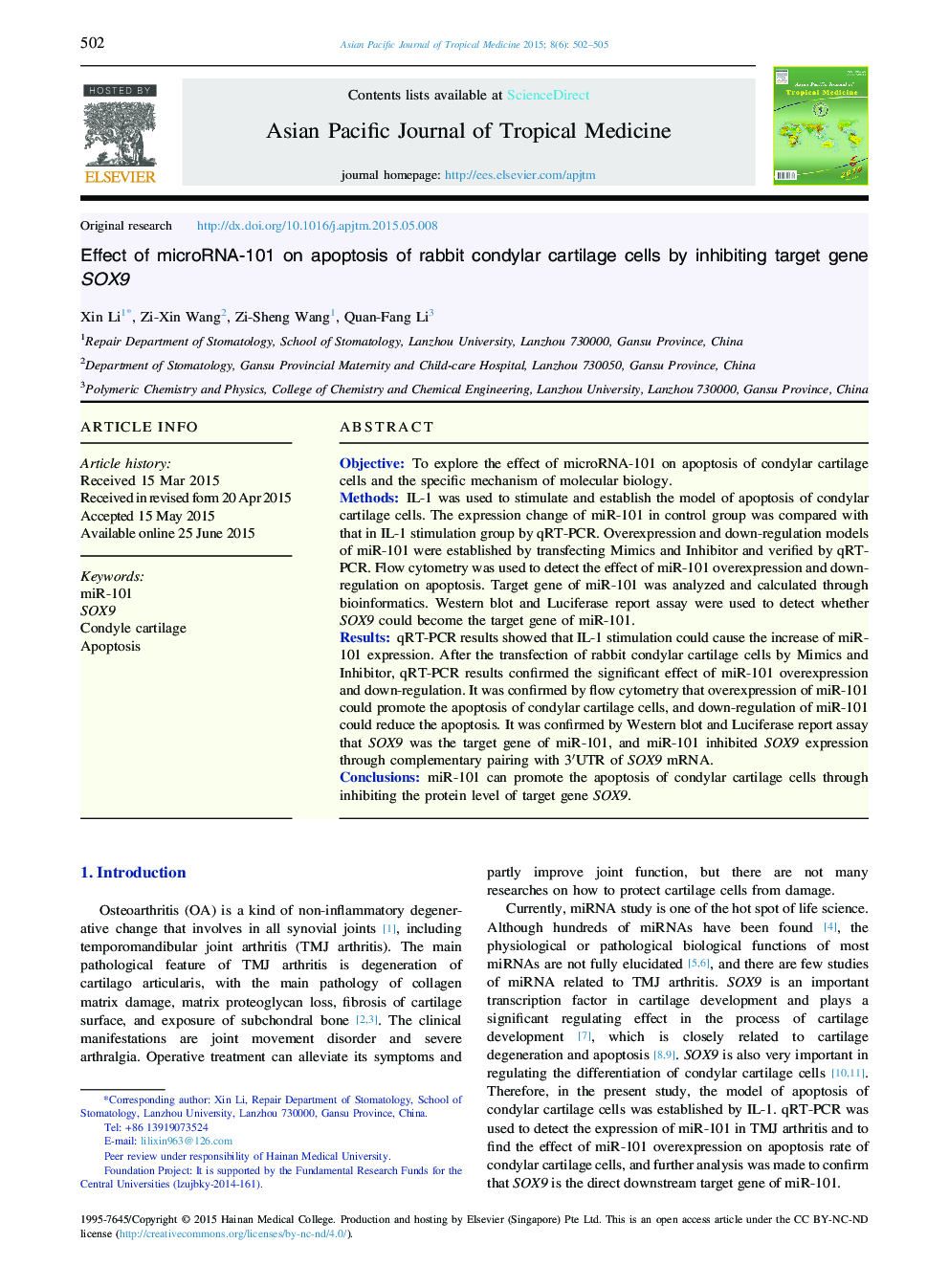| Article ID | Journal | Published Year | Pages | File Type |
|---|---|---|---|---|
| 3455461 | Asian Pacific Journal of Tropical Medicine | 2015 | 4 Pages |
ObjectiveTo explore the effect of microRNA-101 on apoptosis of condylar cartilage cells and the specific mechanism of molecular biology.MethodsIL-1 was used to stimulate and establish the model of apoptosis of condylar cartilage cells. The expression change of miR-101 in control group was compared with that in IL-1 stimulation group by qRT-PCR. Overexpression and down-regulation models of miR-101 were established by transfecting Mimics and Inhibitor and verified by qRT-PCR. Flow cytometry was used to detect the effect of miR-101 overexpression and down-regulation on apoptosis. Target gene of miR-101 was analyzed and calculated through bioinformatics. Western blot and Luciferase report assay were used to detect whether SOX9 could become the target gene of miR-101.ResultsqRT-PCR results showed that IL-1 stimulation could cause the increase of miR-101 expression. After the transfection of rabbit condylar cartilage cells by Mimics and Inhibitor, qRT-PCR results confirmed the significant effect of miR-101 overexpression and down-regulation. It was confirmed by flow cytometry that overexpression of miR-101 could promote the apoptosis of condylar cartilage cells, and down-regulation of miR-101 could reduce the apoptosis. It was confirmed by Western blot and Luciferase report assay that SOX9 was the target gene of miR-101, and miR-101 inhibited SOX9 expression through complementary pairing with 3′UTR of SOX9 mRNA.ConclusionsmiR-101 can promote the apoptosis of condylar cartilage cells through inhibiting the protein level of target gene SOX9.
